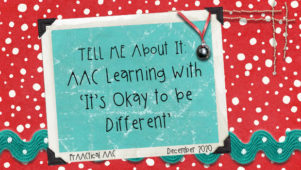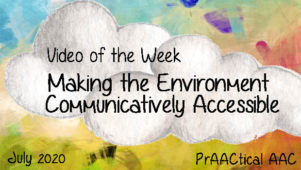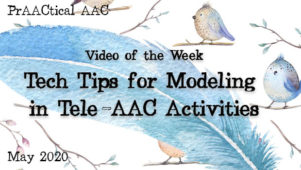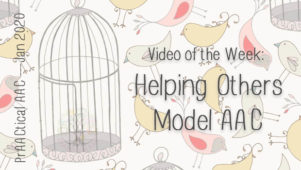Language Facilitation Strategies
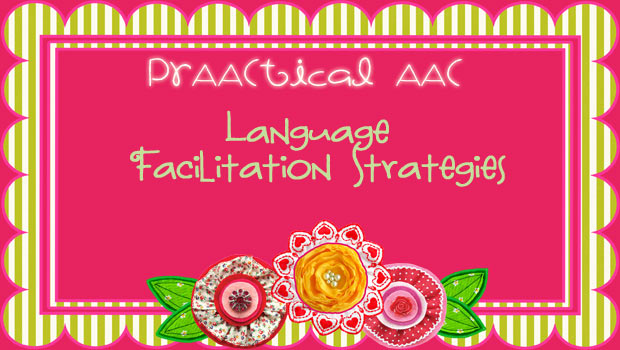
Well, it’s Week 4 of the new semester, and in our AAC classes, we’ve been talking a lot about how language is represented and organized in communication boards/books, SGDs, and AAC apps. We’ve talked about the pros and cons of representing language in various ways and discussed the options for setting up displays so that people can easily access the words they need. At this point, we know how to choose appropriate symbols, select appropriate vocabulary, and arrange it in an appropriate format. In short, we know how to put language ‘in.’ Now comes the hard part: Getting it out.
How do we get people to actually use the language that’s been so carefully stored in the no-tech, low-tech, and high-tech AAC tools?
Our June Strategy of the Month is about techniques for language facilitation. If you’re an SLP well-versed in language therapy with speaking children, these posts will cover some familiar territory. Eliciting language and responding in a way that facilitates the learning of more advanced skills is pretty much the same whether you are working with someone who communicates primarily through natural speech, manual signs, or an AAC device. There are a couple of extra things we have to attend to, but if you can facilitate language in a speaking child, you can do it with someone who is communicating through AAC.
We start by acknowledging that the best way to get someone to communicate is to help them WANT to communicate. Once a person is internally driven to want to express himself, everything else is easier. Once we’ve created the ‘teachable moment,’ we want to take what the child/adult has given us and use some strategies for advancing their language skills. In this post, we’ll focus on the E’s: Extending, expanding, and elaborating on their message.
–
It’s pretty simple, actually. The person using AAC says something and we respond with a sentence that is slightly longer and more complex. “More” becomes “More tickle,” for example. “More tickle” might become “Want more tickle”
—
“She phone” might become “She called us on the phone.”
“She called us on the phone” could then be expanded to “She called us on the phone yesterday.”
–
“We go not” can become “We are not going”
“We are not going” can be elaborated into “We are not going today.”
–
The idea is to repeat a better version of the original utterance, adding something that fits with what you are targeting in your language goals. Sometimes that will be increasing length of utterance, other times it will be a certain syntactic structure, morphological ending, or semantic concept. What you add will be driven by what you want the child to learn. Language expansions have a robust evidence base of support and are frequently used as part of a comprehensive instructional paradigm.
The piece that we add for people who are learning AAC is aided language input. Whenever possible, we want to provide a model of that language target expressed through AAC. So as I’m saying “We are not going” with my natural speech, I’m also using AAC to say it. In some cases, it means that I am sharing the child’s communication device. Other times, I may want to use a shared classroom communication device or even make a mock up of their display (such as the poster-sized versions available in the Pixon Project Kit) and use that.
–
The idea is this: Hearing the target language is good, but hearing and seeing it using the same AAC system the child is learning is a big part of what will catalyze language acquisition. (If you’re not prepared to use AAC when you talk, you better be prepared for the child to learn very slowly.)
–
Once appropriate communication opportunities have been created, move forward with expansions and extensions using AAC. Throughout the month, we’ll continue to talk about ways to facilitate language development in people learning AAC. In the meantime, challenge yourself to do a bit more aided language input with the E’s: expansions and extensions. It’s a winning combination.
–
Filed under: Strategy of the Month
Tagged With: aided language input, expansion, extension, intervention, language
This post was written by Carole Zangari

